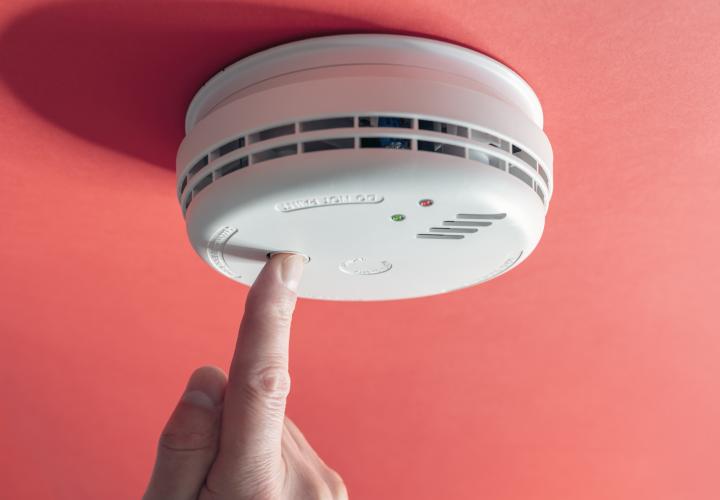The Office for Community Child Health works to enhance healthy child development across a variety of areas. As part of this mission, two of our programs—the Injury Prevention Center and Healthy Homes—focus specifically on safety, helping to protect children and families from potential hazards in their homes and communities. This month, in honor of Carbon Monoxide Awareness Month, they are sharing essential tips to help protect your home and loved ones from an invisible, yet potentially deadly, threat: carbon monoxide (CO).
Carbon monoxide is often referred to as the “invisible killer” because it is colorless, odorless, and tasteless. Produced when fuels like gasoline, propane, natural gas, or even wood burn incompletely, carbon monoxide can be a silent danger in our homes. Common household appliances that use fuel—such as heating systems, stoves, and even fireplaces—can produce dangerous levels of CO if not properly maintained.
To protect your family from the risks of carbon monoxide poisoning, here are some key safety tips that you can implement in your home today:
1. Know the Symptoms of CO Poisoning
Carbon monoxide poisoning can often be mistaken for the flu, food poisoning, or other illnesses because the symptoms are similar. Be aware of these early warning signs:
- Dizziness
- Nausea
- Shortness of breath
- Lightheadedness
- Headaches
If you or anyone in your home experiences any of these symptoms, get to fresh air immediately and call for help. High levels of CO exposure can be fatal, sometimes causing death within minutes.
2. Install CO Alarms in Key Locations
CO alarms are your first line of defense. Install them in a central location outside each sleeping area and on every level of the home. Be sure to place alarms in other areas as required by local building codes or regulations. For the most effective protection, interconnect your CO alarms so that when one sounds, they all sound.
3. Choose a Quality CO Alarm
When selecting CO alarms, look for ones that have been listed by a recognized testing laboratory. This ensures the alarm meets the safety standards necessary for reliable performance.
4. Follow Manufacturer’s Instructions for Placement and Maintenance
Refer to the manufacturer’s instructions for specific guidance on where to place alarms and at what height. It’s also crucial to test your alarms at least once a month and replace them as recommended by the manufacturer.
5. Respond Quickly if Your CO Alarm Sounds
If your CO alarm goes off, immediately move to a fresh air location, such as outdoors or by an open window or door. Make sure all family members are accounted for and call for help from that fresh air location. Do not re-enter the house until emergency personnel have cleared it as safe.
6. Keep Your Home Ventilation Clear
In winter, snowstorms can cause vents for heating equipment, dryers, and stoves to become blocked. Be sure to check that these vents are clear of snow build-up to avoid a CO buildup inside your home.
7. Never Run a Vehicle or Engine Indoors
Even if the garage door is open, do not leave a vehicle running in an enclosed space like a garage. CO can quickly build up in these areas. If you need to warm your car, move it outside immediately after starting it, and ensure the exhaust pipe is not covered by snow.
8. Use Generators, Space Heaters and Grills Outdoors Only
Generators, non-electric space heaters, gas grills, and charcoal grills all produce CO and should never be used indoors or in enclosed spaces. Always use these devices outside, far from doors, windows, and vents where exhaust could re-enter the home.
9. Furnace Preventive Maintenance
Your furnace keeps you warm and protected all winter, and if properly maintained, it does so safely and efficiently. Carbon monoxide becomes a danger when heating systems break down, aren’t installed correctly, or don’t have enough ventilation. During winter, homes are sealed tight and heating systems run constantly, raising the risk of CO poisoning. Be sure to have your furnace and heating system inspected annually to prevent the risk of exposure.
Protecting Your Family from the Invisible Threat
By taking these precautions and being vigilant about the safety of your home, you can help prevent carbon monoxide poisoning and keep your loved ones safe. Remember that carbon monoxide is not something you can see, smell, or taste—but with the right tools and knowledge, you can stay one step ahead.
